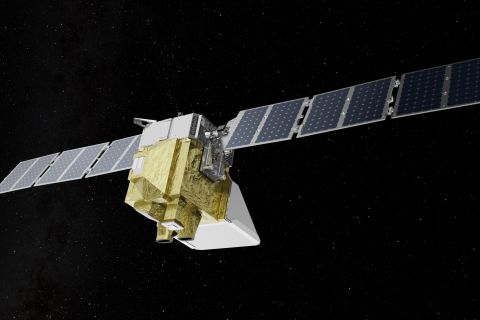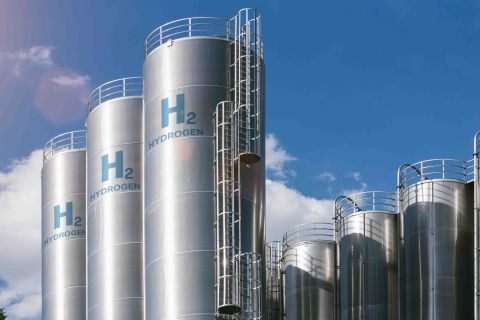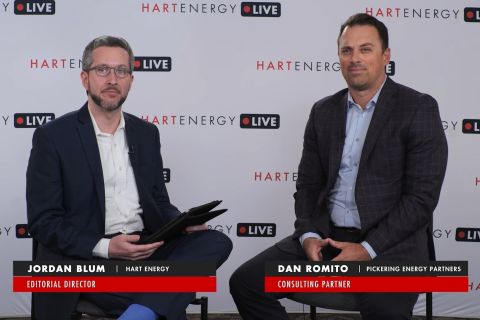
(Source: Hart Energy; Shutterstock.com)
[Editor's note: A version of this story appears in the June 2020 edition of E&P. Subscribe to the magazine here. It was originally published June 1, 2020.]
The shift to digital has slowly but surely changed the way the oil and gas industry does business. Much has been said about the need to keep personnel out of harm’s way, prompting operators and drilling contractors to seek new ways of improving safety while also increasing performance. This has historically been difficult due to the need for so many people on the rig to operate the machinery. With the continued growth of remote operations as a valid way to manage rig performance, however, the traditional model is changing. Remote operating centers have existed for some time. Current reductions in capex and opex on continued commodity price weakness, however, are driving renewed focus on eliminating costs and risks. In this environment, the evolution of these remote operating centers has been brought back into the spotlight.
Benchmarking
Performance benchmarking has long been used to help operators improve the way they drill future wells. By analyzing historical data from previously drilled wells, the operator can effectively leverage the successes and challenges of those wells to enable better performance. With a benchmark set, an acceptable performance threshold becomes standard, and as additional improvements are made, drilling performance versus this benchmark and earlier wells can be compared to holistically understand the drivers of efficiency in the area.
Some difficulty arises with this. Not all local offset wells are applicable when trying to achieve optimal drilling performance, as one-off issues can dramatically impact performance. Additionally, with the pressure on the driller to increase ROP and drill the well faster, relevant lessons learned are not always captured. In one basin, the spread rates between rigs on a days- versus-depth curve can vary wildly, which requires additional analysis between well types and groupings to establish the proper well for benchmarking, often called the pacesetter well. Understanding the answers to certain questions, like what differentiates the wells in a grouping and if drilling behavior patterns can be established via well proximity, will help to establish the pacesetter well in a given grouping. The operator also can focus on the limitations of the slower, more challenging wells instead of those that have already achieved excellent performance.
Drilling road map
Drilling performance is often measured against the pacesetter well(s) in an area regardless of well or casing profile, target formations or planned hole sizes. To maximize the potential improvements possible with drilling optimization, knowing what data are available and pertinent, as well as properly identifying the objectives of the drilling program beforehand, is critical.
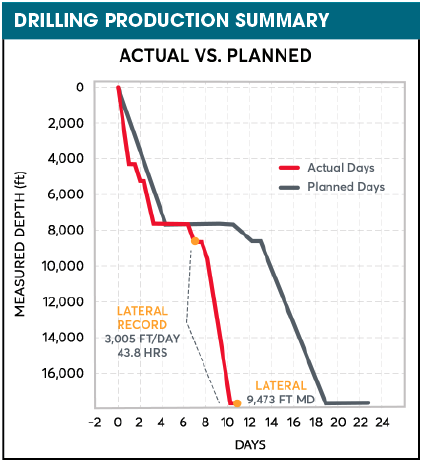
Additionally, comparisons between wells must involve similar well types, not just the regions where they were drilled. Two wells in the Permian Basin might look completely different, with each well plan irrelevant to the other. As such, the criteria for success cannot be static. Simply choosing one fast well could effectively invalidate the entire process if it was a one-off project with a unique factor impacting drilling performance. Understanding the limitations in slower offset wells also is critical. Just because one well took longer to drill than surrounding wells does not mean the learnings from that well should be discarded; rather, the entire operation should be examined so that limitations, either with drilling or on the rig, can be identified and accounted for. At the end of this process, a drilling road map with optimized parameters based on the pacesetter well can be created and used to replicate performance of the benchmarked well.
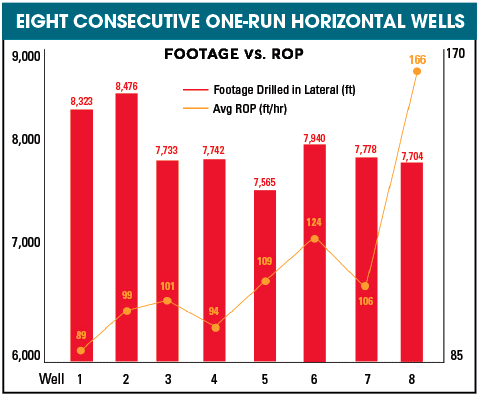
Enabling success
Once well objectives are identified, the execution phase involves multidiscipline collaboration. A remote operating center typically brings together several functional experts from drilling engineering, drilling optimization, bottomhole assembly (BHA) design, survey tool selection and configuration, and well planning to formulate the drilling road map that will align with the pacesetter well and, should performance increase beyond the intended results, become the next pacesetter well.
The well planning/well engineering team ensures that well design does not exceed mechanical limitations and other dysfunctions that could prevent the well from successfully reaching total depth (TD). This information is then used by other groups within the remote operating center to inform their review. Survey tool selection takes place next, with the team determining the ideal survey tool for the parameters detailed in the well objectives. This could be a gyro tool or MWD tool, depending on the analysis of risks.
After this, the drilling services continue to update the latest historical data while monitoring the live data feeds from each rig to seek optimal drilling performance and validate the analytical models. This information is fed into the road maps and optimization reports for field personnel to use as a drilling guide.
Case histories
In a project in the Permian Basin, an operator was experiencing challenges while drilling an extended-reach well in the Wolfcamp Formation. The operator’s two main objectives were to improve drilling performance and decrease the rig time necessary to drill the well. Earlier BHA designs on offset wells had encountered issues with similar well profiles, including reduced ROP and an inability to reach TD.
Using historical data from conventionally drilled wells in this formation, experts helped the operator develop an optimized BHA configuration. By applying learnings from the data, Gyrodata suggested the operator incorporate a motor-assisted rotary steerable system BHA and provided recommendations on better MWD equipment for the formation’s challenges. After implementing the new BHA design, the operator was able to drill a 9,015-ft lateral in only one run of 43.84 drilling hours at an average ROP of 206 ft/hr. Collectively, this process reduced rig time by nine days and achieved total cost savings of about $500,000 (Figure 1).
On another project, an operator wanted to use the lessons learned from remote monitoring of its previous wells to optimize its current eight-well pad. Drawing from the historical database of previous work done with this operator, Gyrodata developed a new plan for the pad. Implementing an optimized BHA with a new motor selection, Gyrodata also used data coming into the remote operating center to continuously update the BHA configuration and drilling parameters for each well.
The eight wells were drilled successfully as consecutive, one-run horizontals. After drilling each well, ROP and footage drilled in the lateral were correlated to ensure that the BHAs were continuing to improve drilling performance. The project ultimately showed an upward trend in average ROP across the eight wells, and ROP of 166 ft/hr set a record on the final well of the pad (Figure 2). Based on an assumed spread rate at current pricing, the lack of damage to the equipment in the optimized BHA, and all the time saved by doing each well in one run, the operator saved hundreds of thousands of dollars.
Editor’s note: This article was submitted prior to the acquisition of Gyrodata’s directional drilling product line by Intrepid Directional Drilling Specialists.
Recommended Reading
Markman: Is MethaneSAT Watching You? Yes.
2024-04-05 - EDF’s MethaneSAT is the first satellite devoted exclusively to methane and it is targeting the oil and gas space.
Tax Credit’s Silence on Blue Hydrogen Adds Uncertainty
2024-01-31 - Proposed rules for the 45V hydrogen production tax credit leave blue hydrogen up in the air, but producers planning to use natural gas with carbon capture and storage have options.
US Finalizes Big Reforms to Federal Oil, Gas Drilling
2024-04-12 - Under the new policy, drilling is limited in wildlife and cultural areas and oil and gas companies will pay higher bonding rates to cover the cost of plugging abandoned oil and gas wells, among other higher rates and costs.
US EPA Expected to Drop Hydrogen from Power Plant Rule, Sources Say
2024-04-22 - The move reflects skepticism within the U.S. government that the technology will develop quickly enough to become a significant tool to decarbonize the electricity industry.
Exclusive: Dan Romito Urges Methane Mitigation Game Plan
2024-04-08 - Dan Romito, the consulting partner at Pickering Energy Partners, says evading mitigation responsibility is "naive" as methane detection technology and regulation are focusing on oil and gas companies, in this Hart Energy Exclusive interview.

